

Waterford
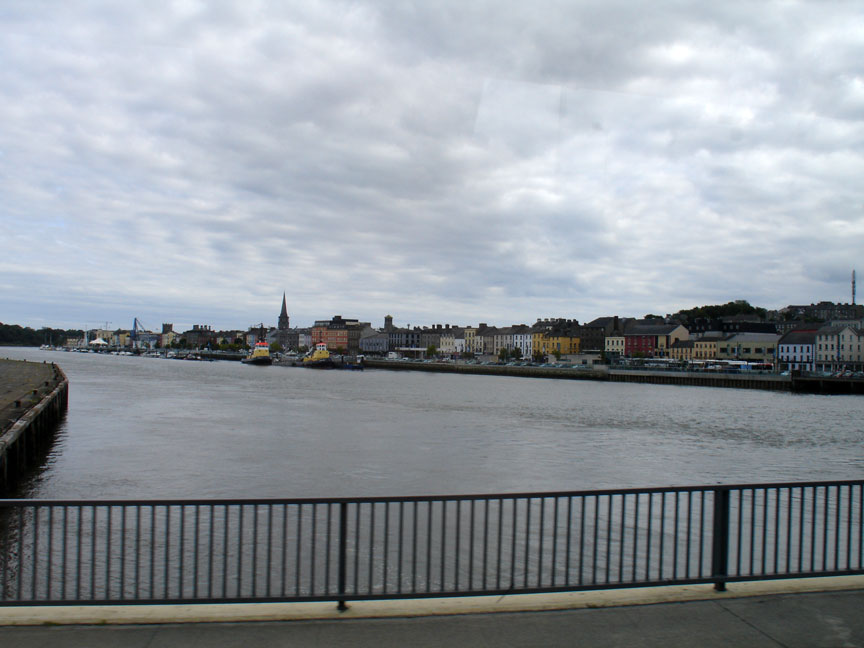
Waterford
Waterford is the seventh largest city in all of Ireland and the fifth largest city within the Republic of Ireland. It is the largest city in the South-East of the country. Waterford City Council is the local government entity for the city and its immediate hinterland. Founded in 914 AD by the Vikings, it is the country's oldest city. The population of the city in 2006 was 49,213; of which 45,748 lived within the city limits, and 3,465 lived in the suburbs in County Kilkenny.
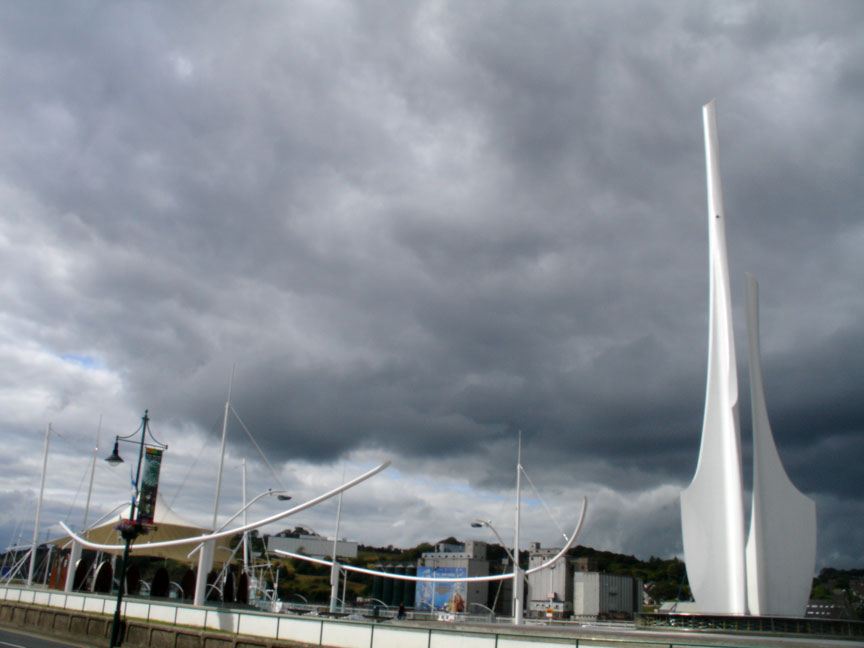
William Vincent Wallace Plaza
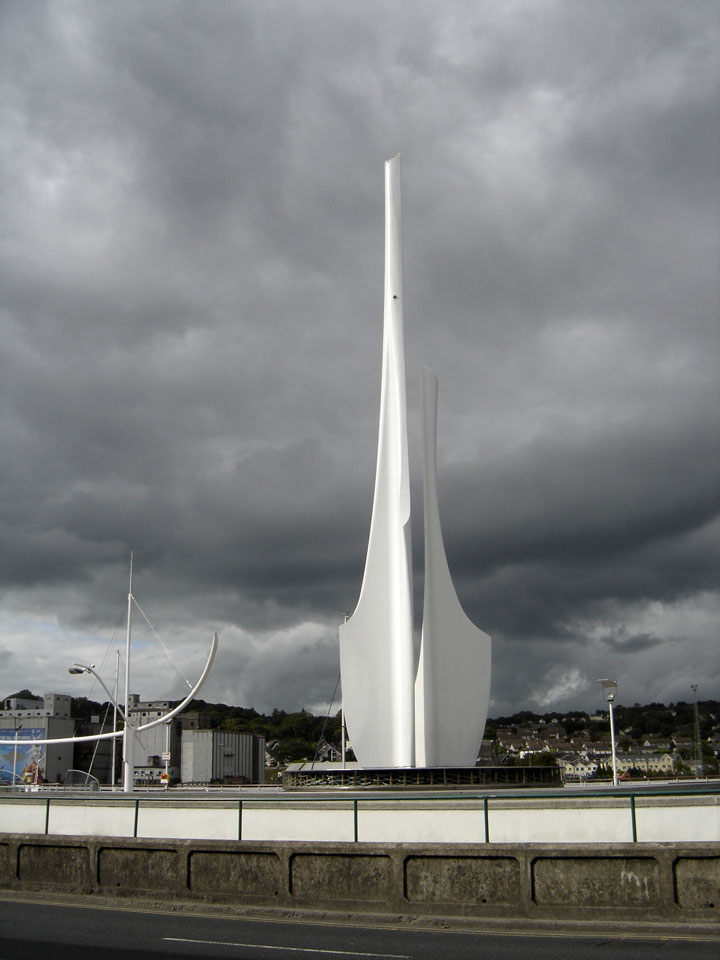
The city is situated at the head of Waterford Harbour (Irish: Loch Dá Chaoch or
Cuan Phort Láirge). The city motto Urbs Intacta Manet Waterfordia ("Waterford
remains the untaken city") was granted by King Henry VII of England in 1497
after Waterford refused to recognise the claims of the pretenders Lambert Simnel
and Perkin Warbeck to the English throne. Waterford was subjected to two
sieges in 1649 and 1650, during the Cromwellian conquest of Ireland. It
withstood the first siege but surrendered during the second siege to Henry
Ireton on 6 August 1650.
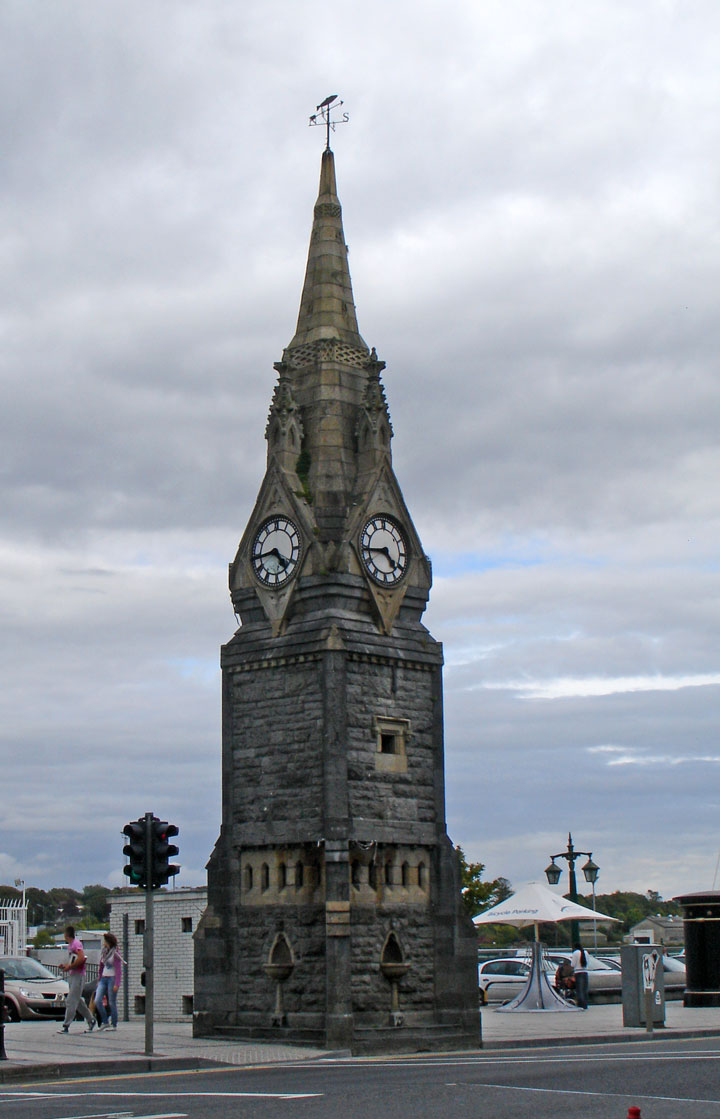
Reginald's Tower is the oldest urban civic building in Ireland, and the oldest
monument to retain its Viking name. To this day, it remains Waterford's most
recognizable landmark. It is believed to be the first building in Ireland to use
mortar. The River Suir, which flows through Waterford City, has provided a basis
for the city's long maritime history. The place downriver from Waterford where
the Nore and the Barrow join the River Suir is known in Irish as Cumar na dTrí
Uisce ("The confluence of the three waters"). Waterford Port has been one of
Ireland's major ports for over a millennium. In the 19th century shipbuilding
was a major industry. The owners of the Neptune Shipyard, the Malcomson family,
built and operated the largest fleet of iron steamers in the world between the
mid-1850s and the late-1860s, including five trans-Atlantic passenger liners.

Today, Waterford is known for Waterford Crystal, a legacy of the city's former
glass making industry. Glass, or crystal, was manufactured in the city from 1783
until early 2009, when the factory there was shut down after the receivership of
Waterford Wedgwood plc. Waterford is the sister city of St. John's, Newfoundland
and Labrador and Rochester, New York.Viking raiders first established a
settlement near Waterford in 853. It and all the other longphorts were vacated
in 902, the Vikings having been driven out by the native Irish. The Vikings
re-established themselves in Ireland at Waterford in 914, led at first by Ottir
Iarla (Jarl Ottar) until 917, and after that by Ragnall ua Ímair and the Uí
Ímair dynasty, and built what would be Ireland's first city. A list of the
city's rulers from this date to the mayors of the present day can be found in
Rulers of Waterford. Among the most prominent kings of Waterford was Ivar of
Waterford.
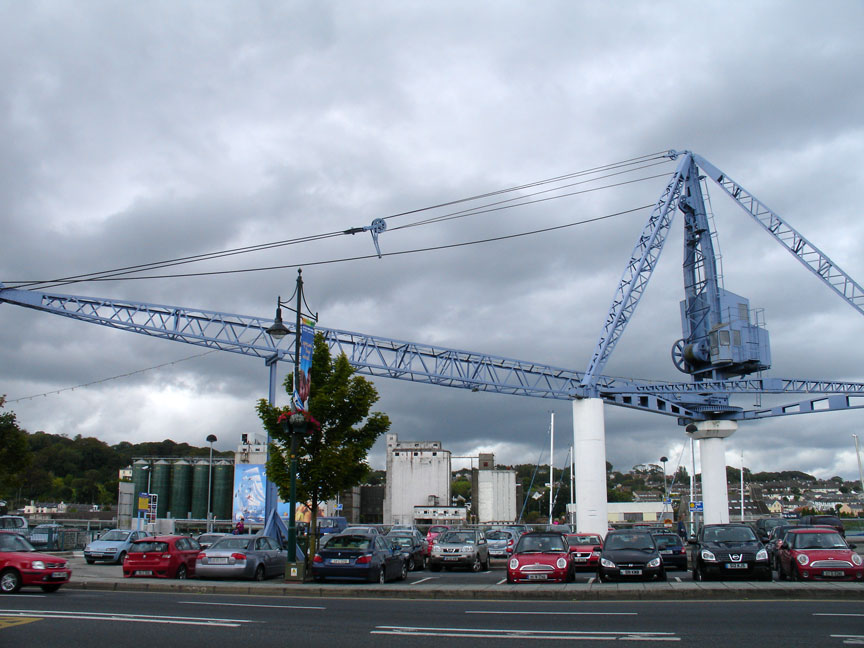
In 1167, Diarmuid MacMorrough, King of Leinster, failed in an attempt to take
Waterford. He returned in 1170 with Norman mercenaries under Richard de Clare,
2nd Earl of Pembroke (Strongbow); together they besieged and took Waterford
after a desperate defence. This was the introduction of the Anglo-Normans into
Ireland. In 1171, Henry II of England landed at Waterford. Waterford and then
Dublin were declared royal cities, Dublin was declared capital of Ireland.
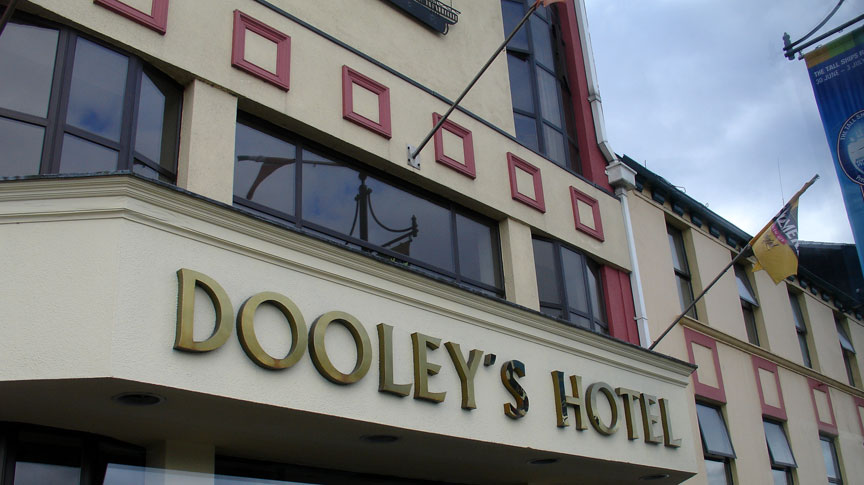
Throughout the medieval period, Waterford was Ireland's second city after
Dublin. In the 15th century Waterford repelled two pretenders to the English
throne: Lambert Simnel and Perkin Warbeck. As a result, King Henry VII gave the
city its motto: Urbs Intacta Manet Waterfordia (Waterford remains the untaken
city).
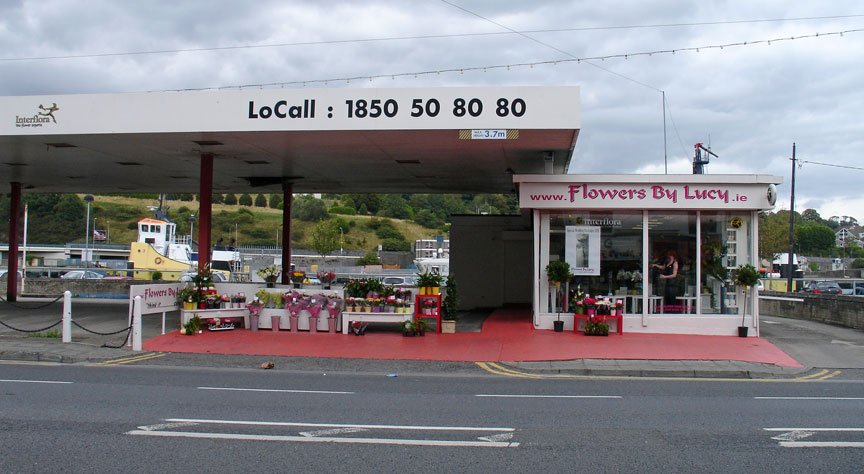
After the Protestant Reformation, Waterford remained a Catholic city and
participated in the confederation of Kilkenny – an independent Catholic
government from 1642 to 1649. This was ended abruptly by Oliver Cromwell, who
brought the country back under English rule; his nephew Henry Ireton finally
took Waterford in 1650 after a major siege.
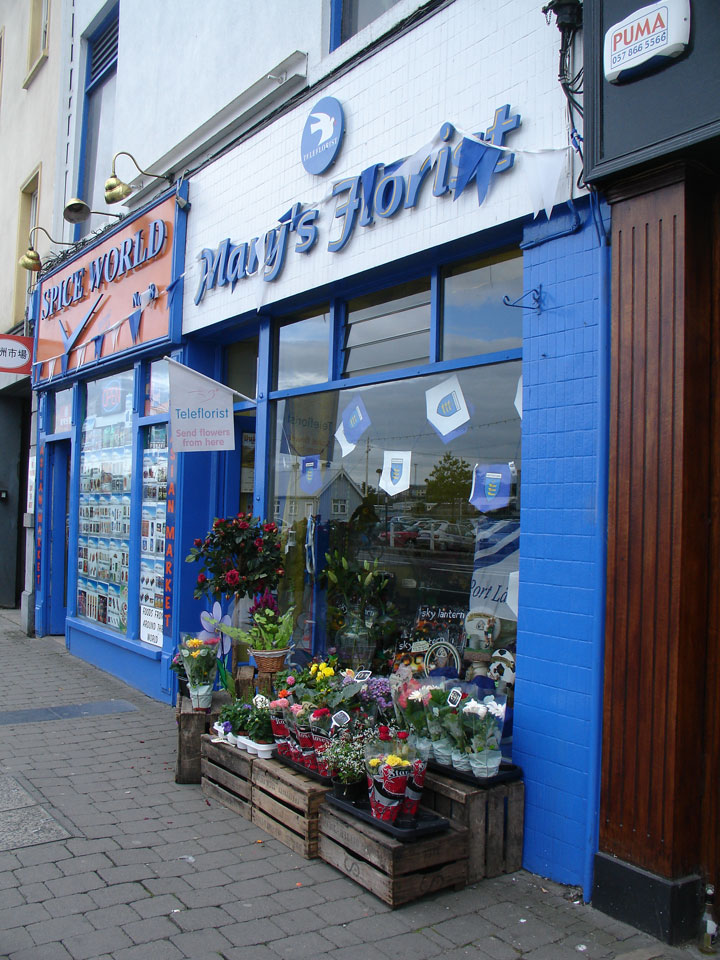
The 18th century was a period of huge prosperity for Waterford. Most of the
city's best architecture appeared during this time. In the 19th century, great
industries such as glass making and ship building thrived in the city.
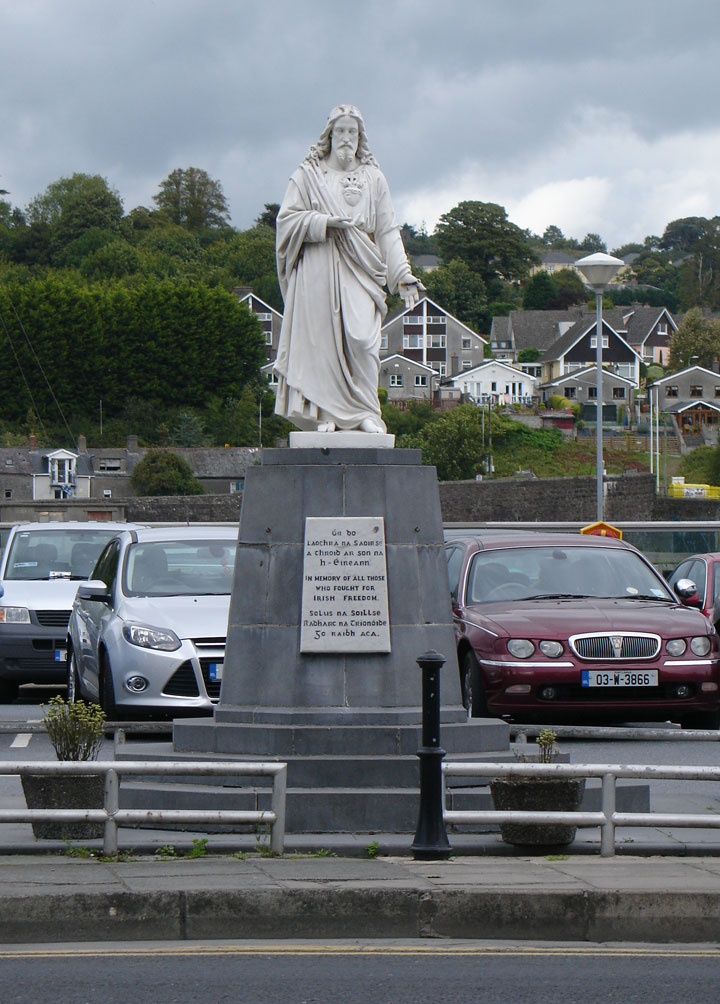
In the early 19th century, Waterford City was deemed vulnerable and the British
government erected three Martello towers on the Hook Peninsula to reinforce the
existing Fort at Duncannon.
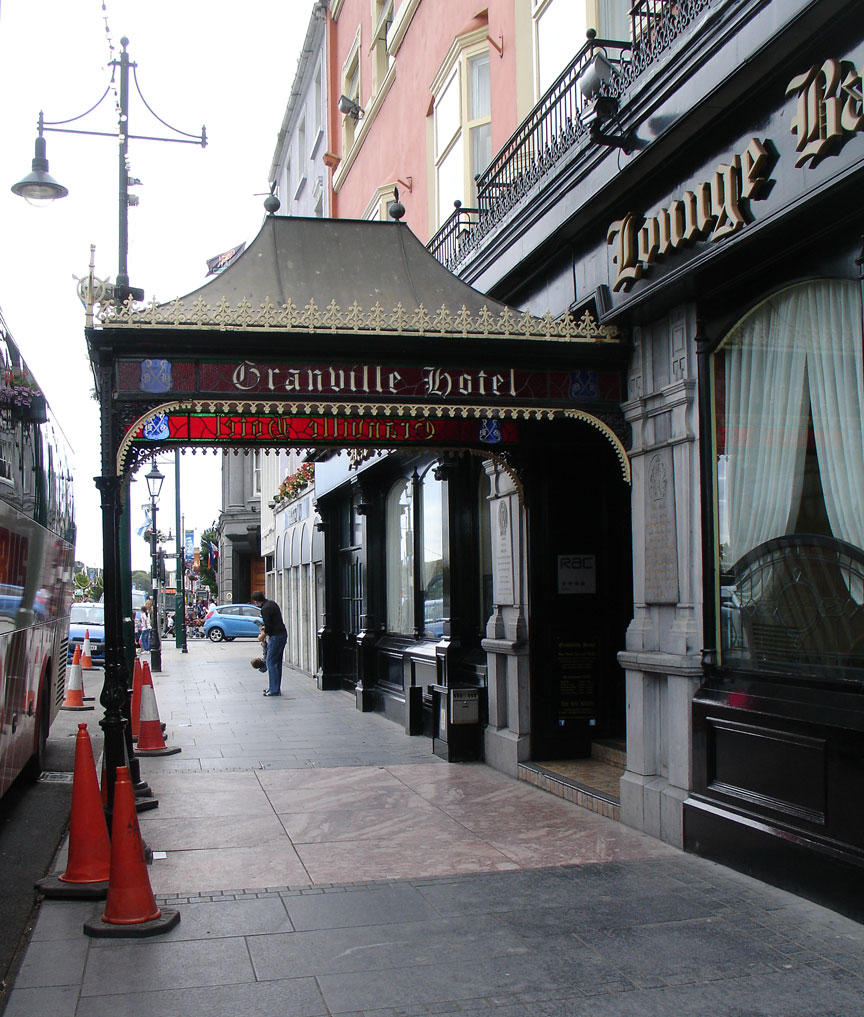
The city was represented in the Parliament of the United Kingdom from 1891 to
1918 by John Redmond MP, leader (from January 1900) of the Irish Parliamentary
Party. Redmond, then leader of the pro-Parnell faction of the party, defeated
David Sheehy in 1891. In 1911, Br. Jerome Foley, Br. Dunstan Drumm and Br.
Leopold Loughran left Waterford for Malvern, Australia. Here, they founded a
Catholic college which is still in existence today. In July 1922, Waterford was
the scene of fighting between Irish Free State and Irish Republican troops
during the Irish Civil War.
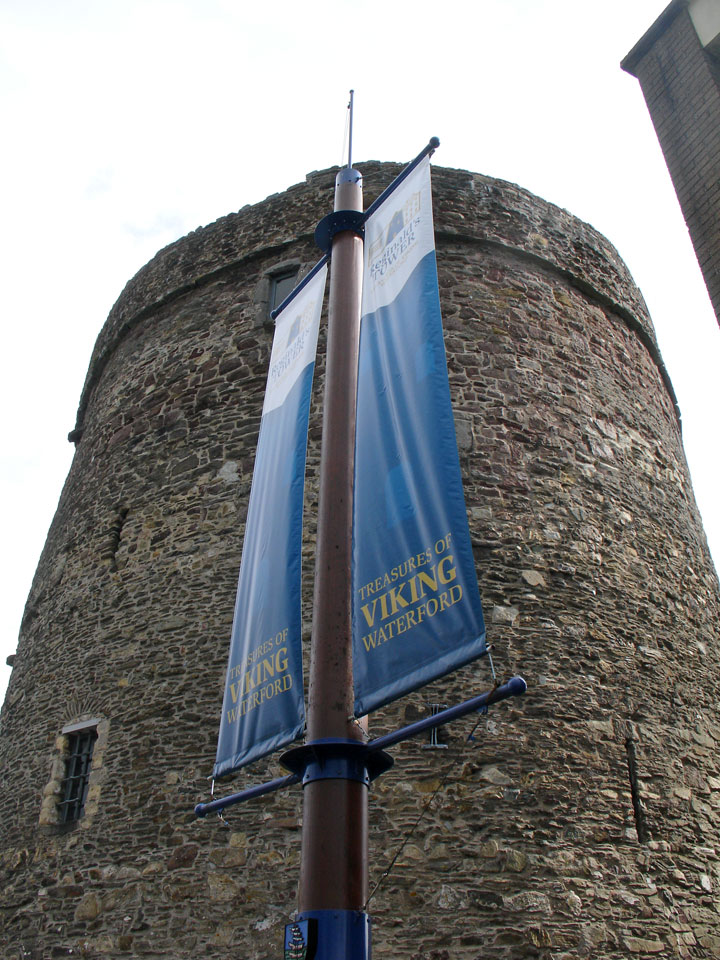
Reginald's Tower
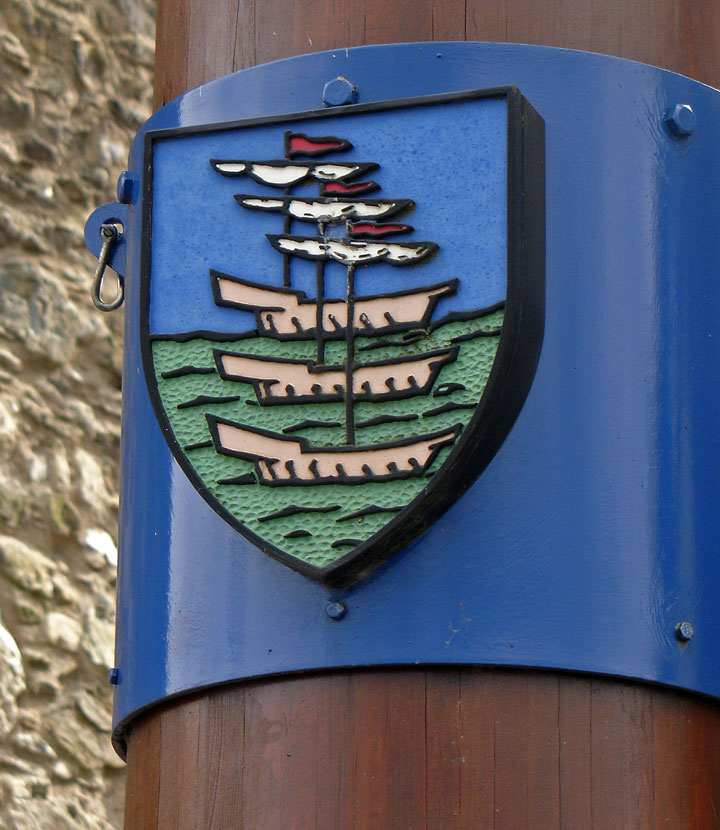
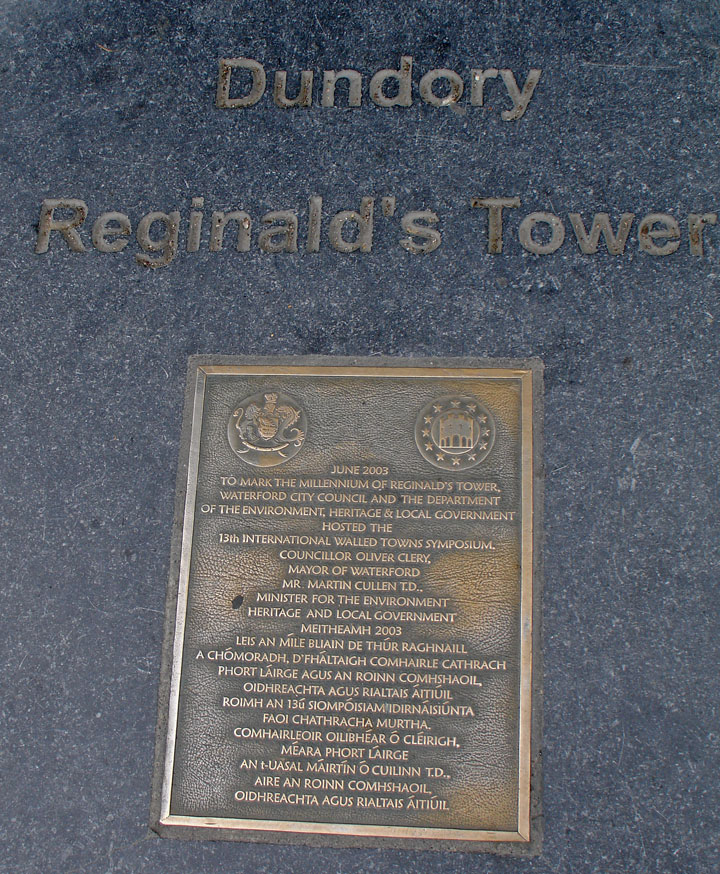
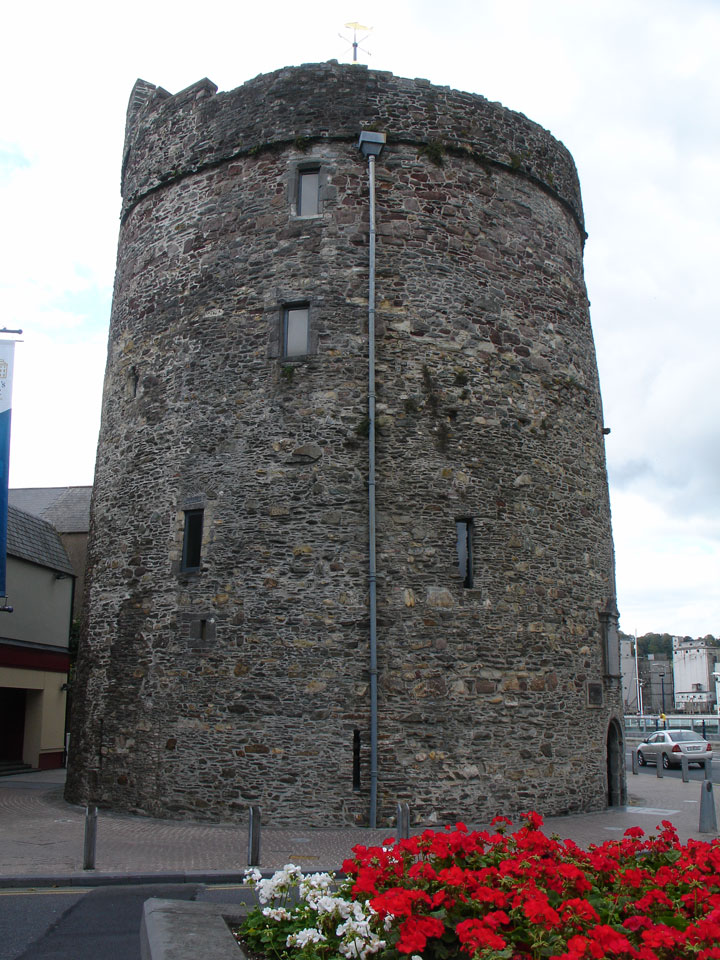
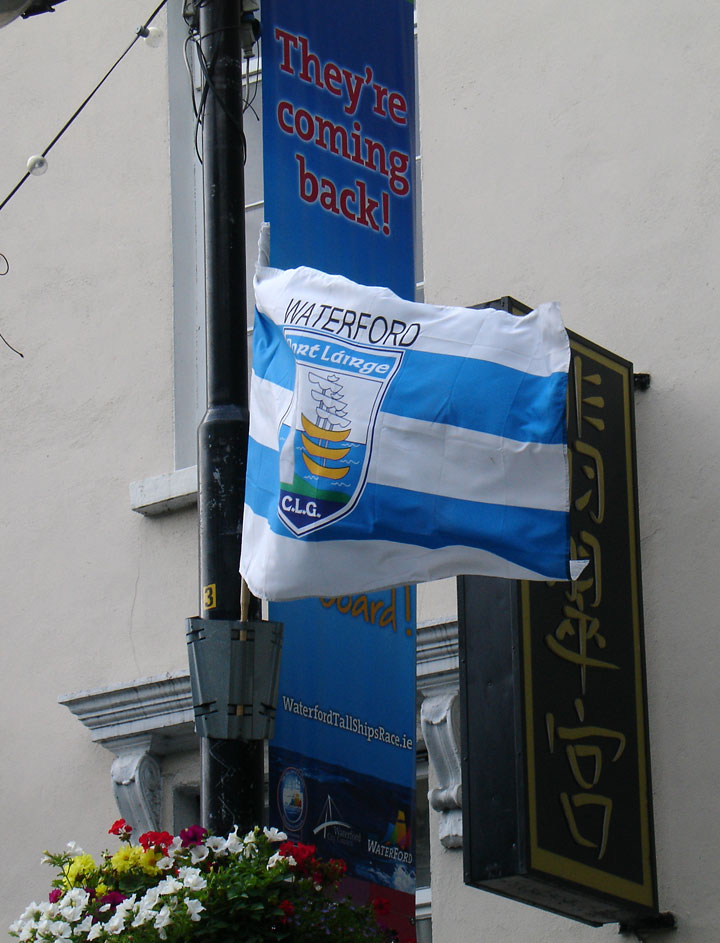

The City of Waterford consists of various cultural quarters, the oldest of which is known as 'the Viking Triangle'. This is the part of the city surrounded by the original 10th century fortifications, which is triangular in shape with its apex at Reginald's Tower. Though this was once the site of a thriving Viking city, the city centre has shifted to the west over the years, and it is now a quiet and tranquil area, dominated by narrow streets, medieval architecture, and civic spaces. Over the past decade, a number of restaurants have opened in High Street and Henrietta Street, taking advantage of the charming character of the area. Much of Waterford's impressive architecture is to be found in 'the Viking Triangle'.

Thomas Francis Meagher
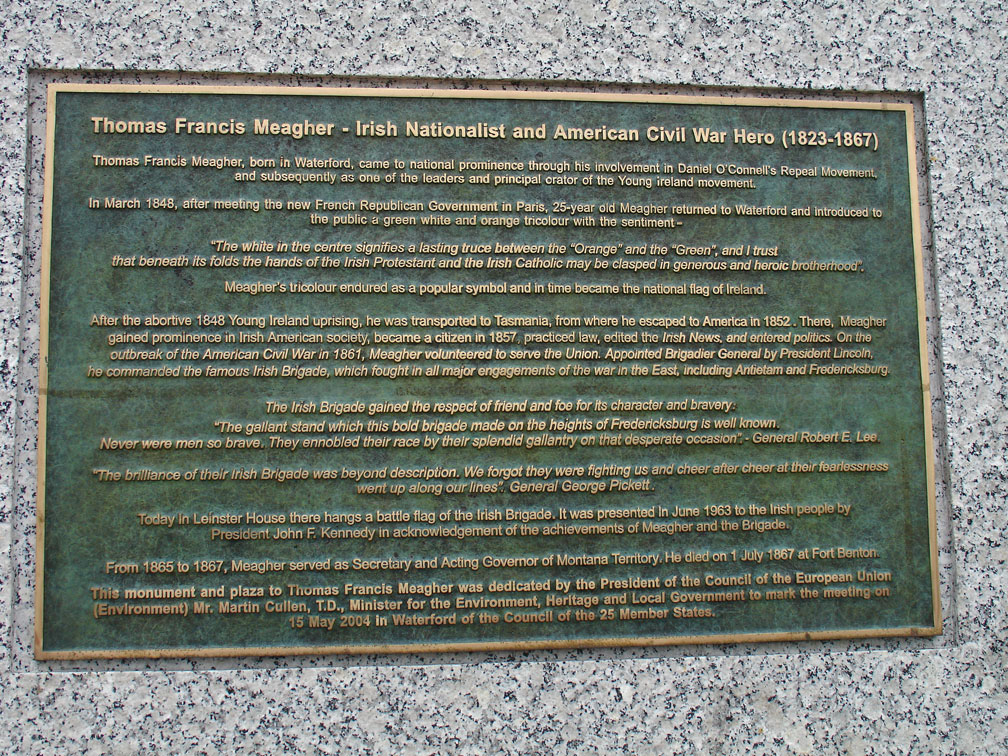
In the 15th century, the city was enlarged with the building of an outer wall on
the west side. Today Waterford retains more of its city walls than any other
city in Ireland with the exception of Derry, whose walls were built much later.
Tours of Waterford's city walls are conducted daily.
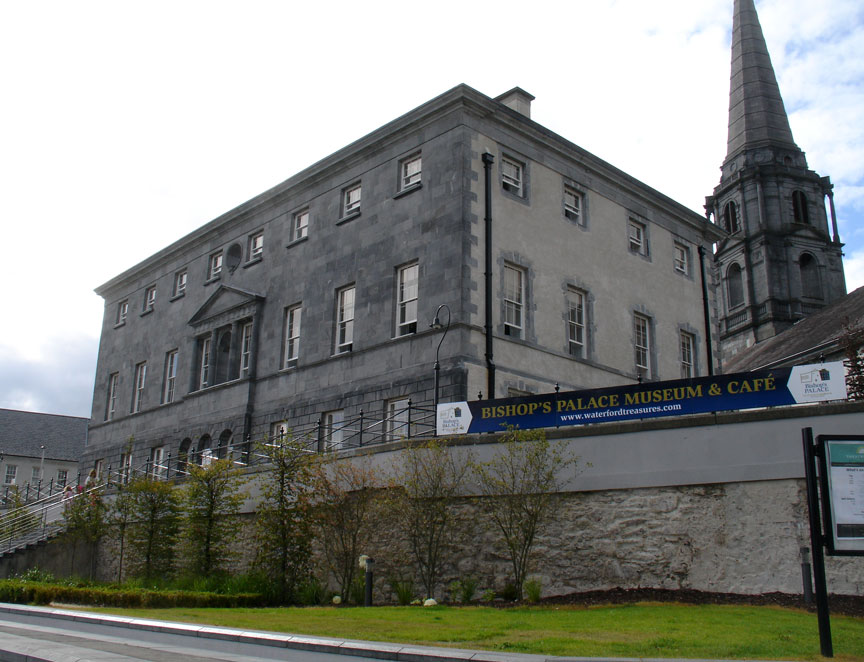
Bishops Palace
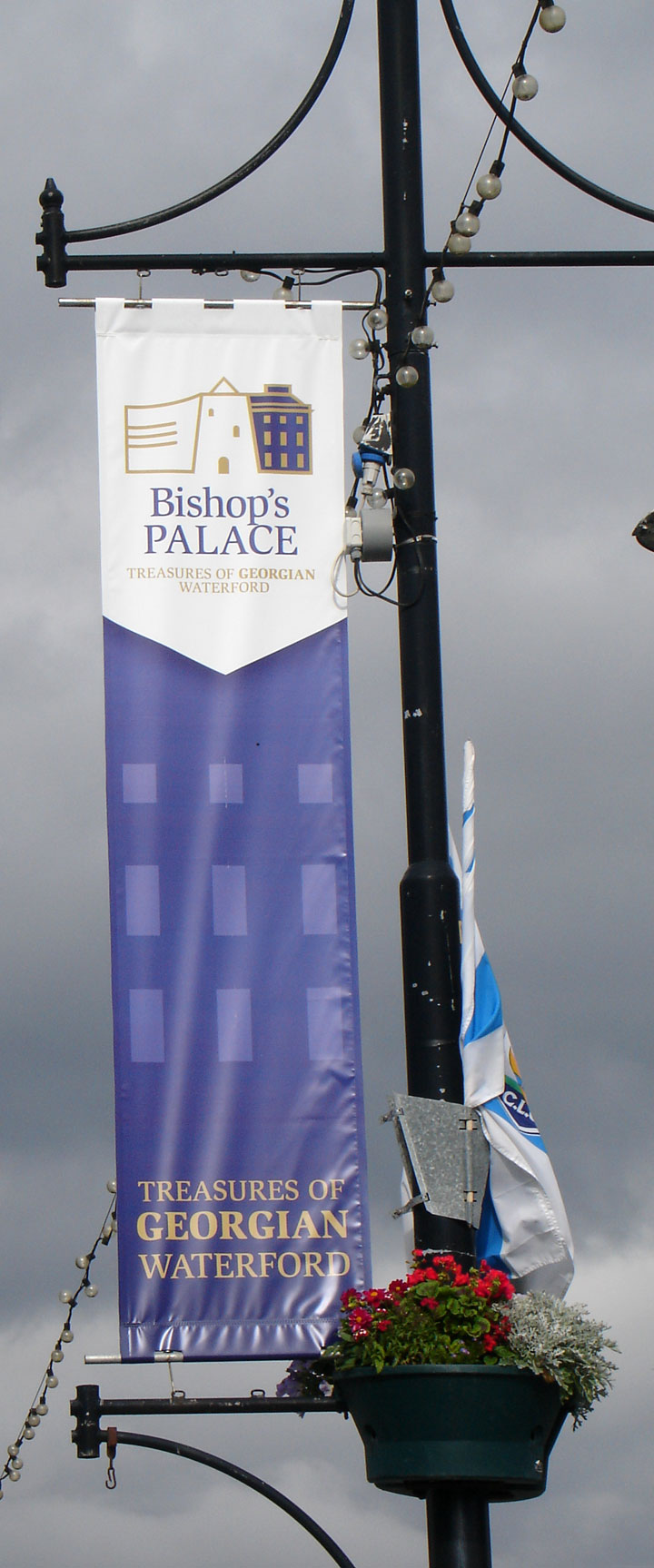
The Quay, once termed by historian Mark Girouard 'the noblest quay in Europe',
is a mile long from Grattan Quay to Adelphi Quay, though Adelphi Quay is now a
residential area. It is still a major focal point for Waterford, commercially
and socially, and the face that Waterford presents to those traveling into the
city from the north. Near Reginald's Tower is the William Vincent Wallace Plaza,
a monument and amenity built around the time of the millennium that commemorates
the Waterford born composer.
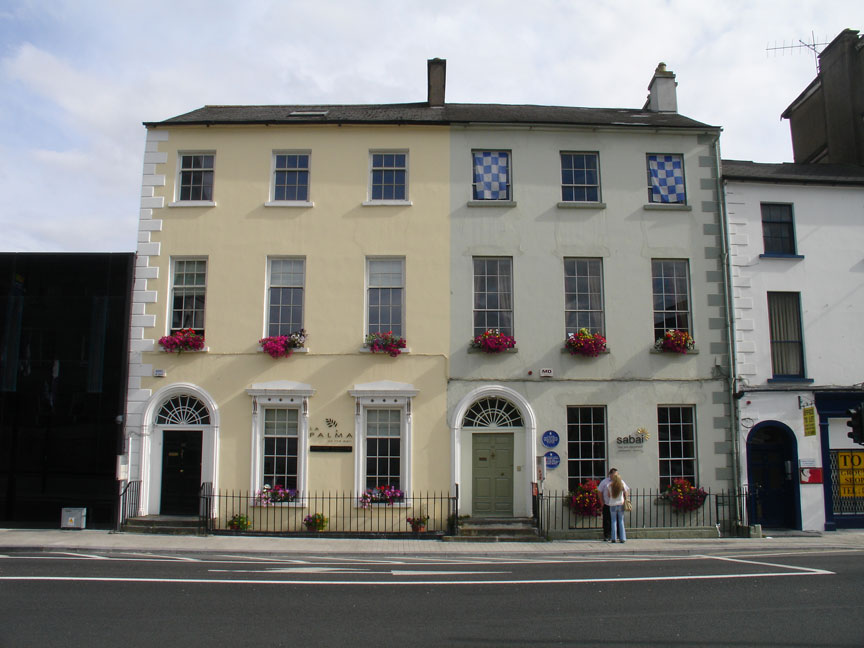
John Roberts Square is a pedestrianised area that is one of the main focal
points of Waterford's modern day commercial centre. It was named after the
city's most celebrated architect, John Roberts, and was formed from the junction
of Barronstrand Street, Broad Street and George's Street. It is often referred
to locally as Red Square, due to the red paving that was used when the area was
first pedestrianised. A short distance to the east of John Roberts Square is
Arundel Square, another square with a fine commercial tradition, which the City
Square shopping centre opens onto.
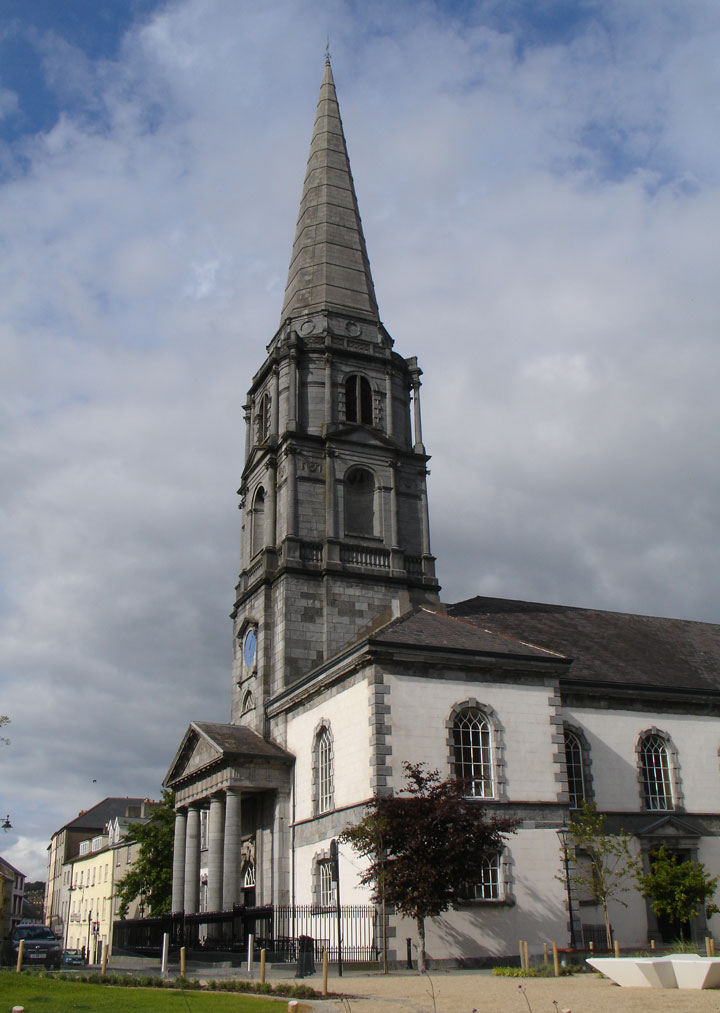
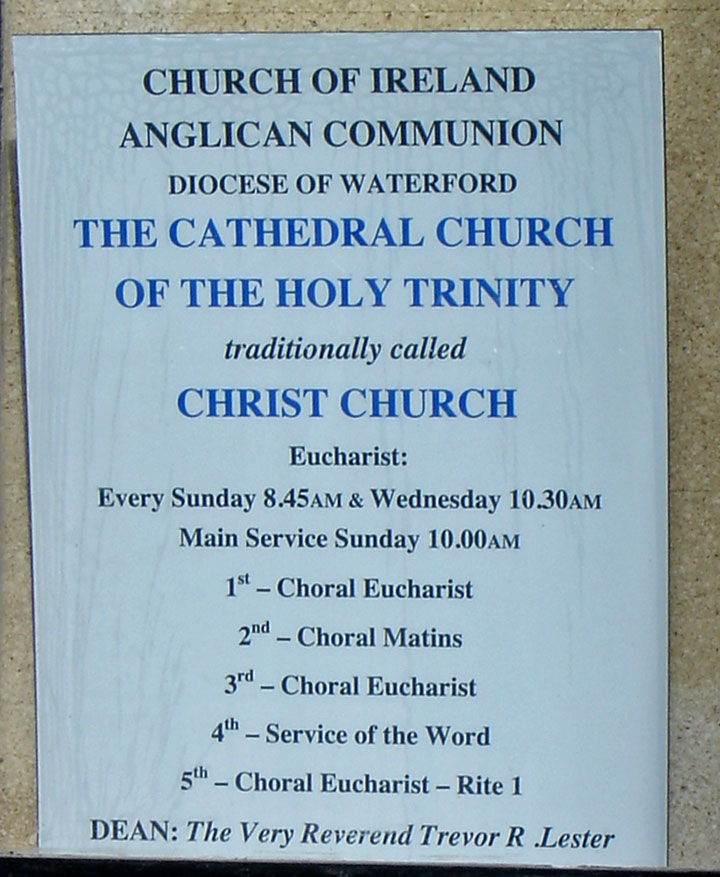
Ballybricken, in the west, just outside the city walls, is thought to have been Waterford's Irishtown, a type of settlement that often formed outside Irish cities to house the Vikings and Irish that had been expelled during the Norman invasion of Ireland. Ballybricken is an inner city neighbourhood with a long tradition, centred around Ballybricken hill, which was a large, open market-square. Today it has been converted into a green, civic space, but the Bull Post, where livestock was once bought and sold, still stands as a remnant of the hill's past.
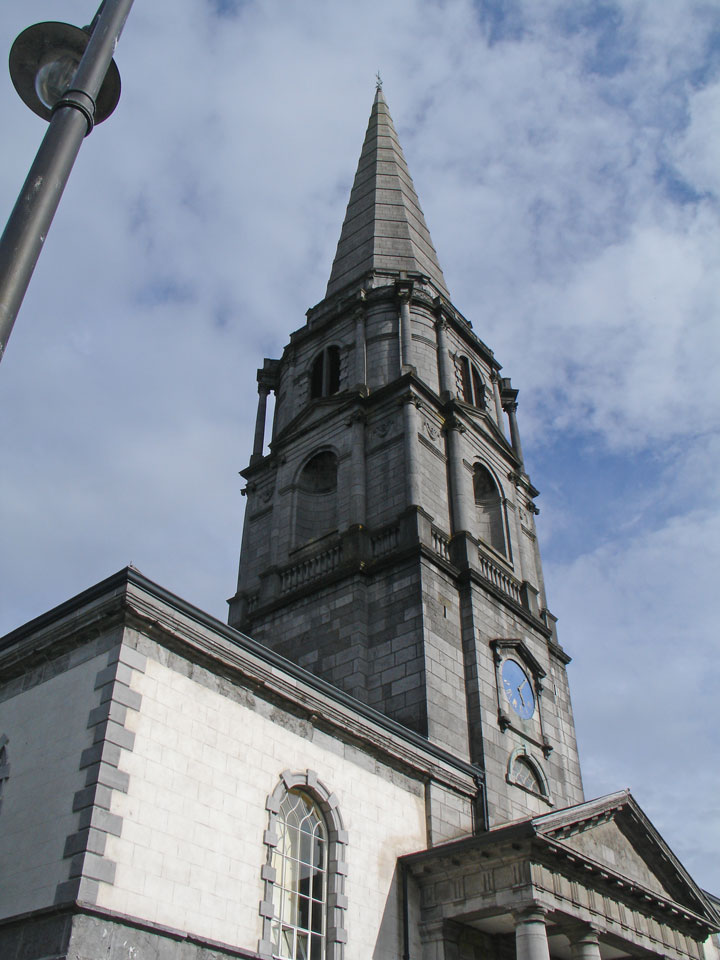

The Mall is a fine Georgian thoroughfare, built by the Wide Streets Commission
in order to extend the city southwards. It contains some of the city's finest
Georgian architecture. The People's Park, Waterford's largest and finest park,
is located nearby.

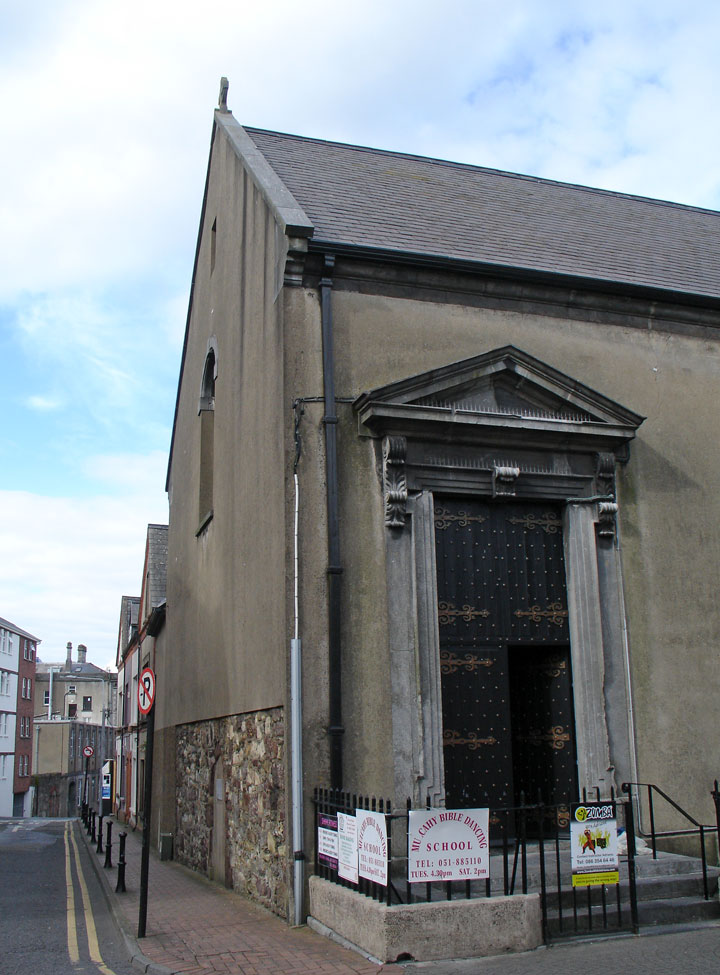
Ferrybank in County Waterford is Waterford's only suburb north of the river. It
contains a village centre of its own. Waterford City Council have granted
permission for a number of major retail developments in Ferrybank. One has been
completed and the second is currently under construction and due to be completed
in January 2009.
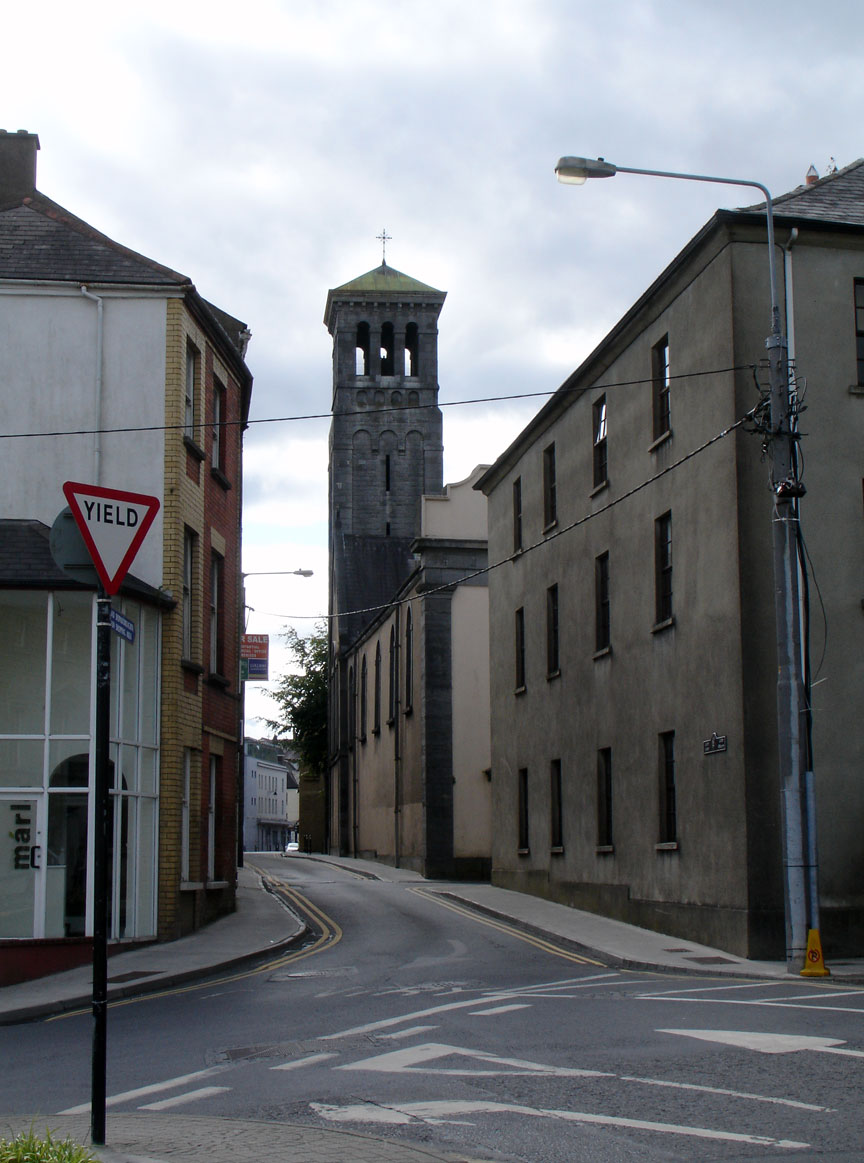
In April 2003 an important site combining a 5th century Iron Age and 9th century
Viking settlement was discovered at Woodstown near the city, which appears to
have been a Viking town that predates all such settlements in Ireland.
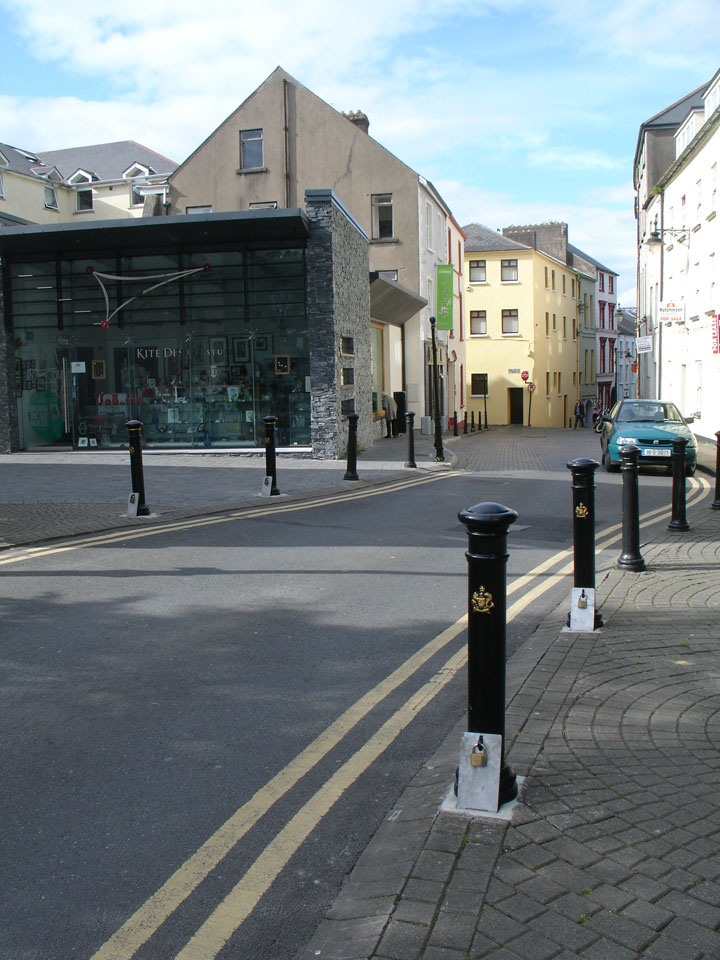
Waterford Crystal is manufactured in Waterford but in early 2009 the company
moved it operations to Europe after denying the workforce their entitlements,
some workers lost many thousands in pension rights etc. A new
Waterford Crystal
visitor centre opened on June 22, 2010. Tours are conducted daily. It is the
biggest Waterford Crystal store in the world. While on the tour you can see how
the glass is manufactured. The center is open seven days a week.

Waterford's oldest public house (pub) can be found just outside the old 'Viking
Triangle'. T & H Doolans, of 31/32 George's Street, has been officially active
and open to the public for over three hundred years. The official record of
licences dates back to the eighteenth century but the premises is believed to be
closer to five hundred years in age. A main element of the structure includes
one of the original city walls, almost 1,000 years old, which can be viewed in
the lounge area of the building.
Text from Wikipedia